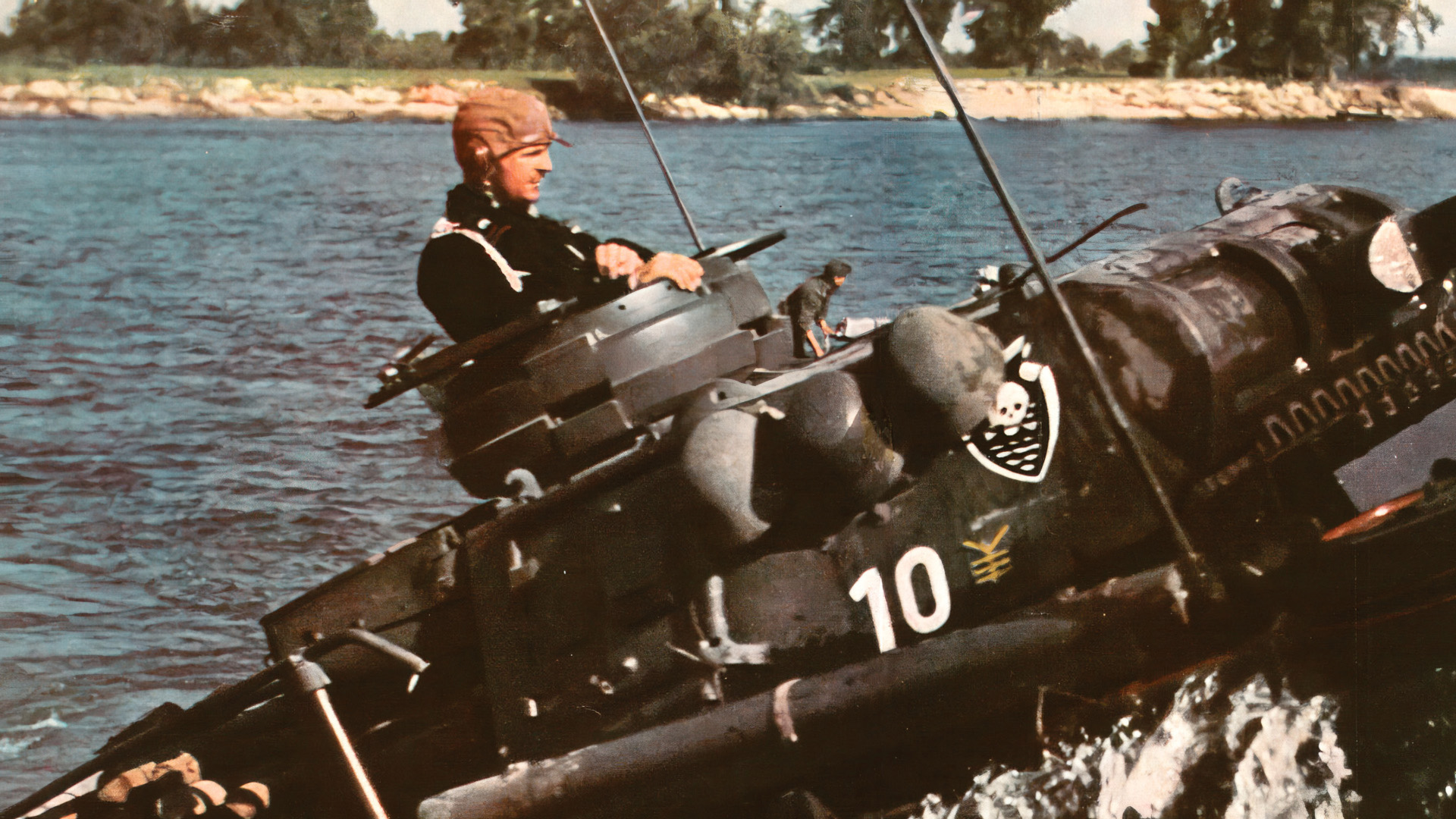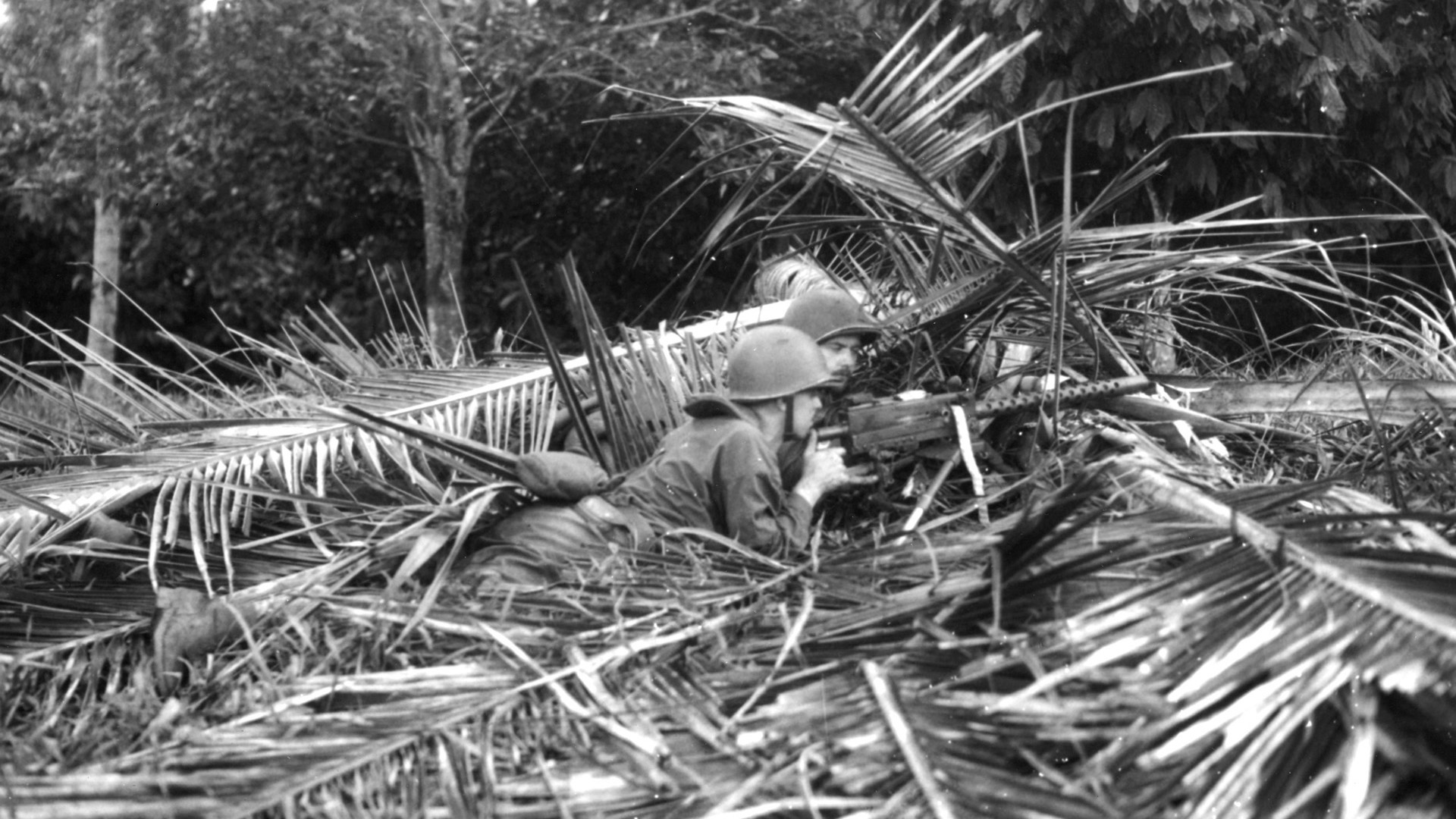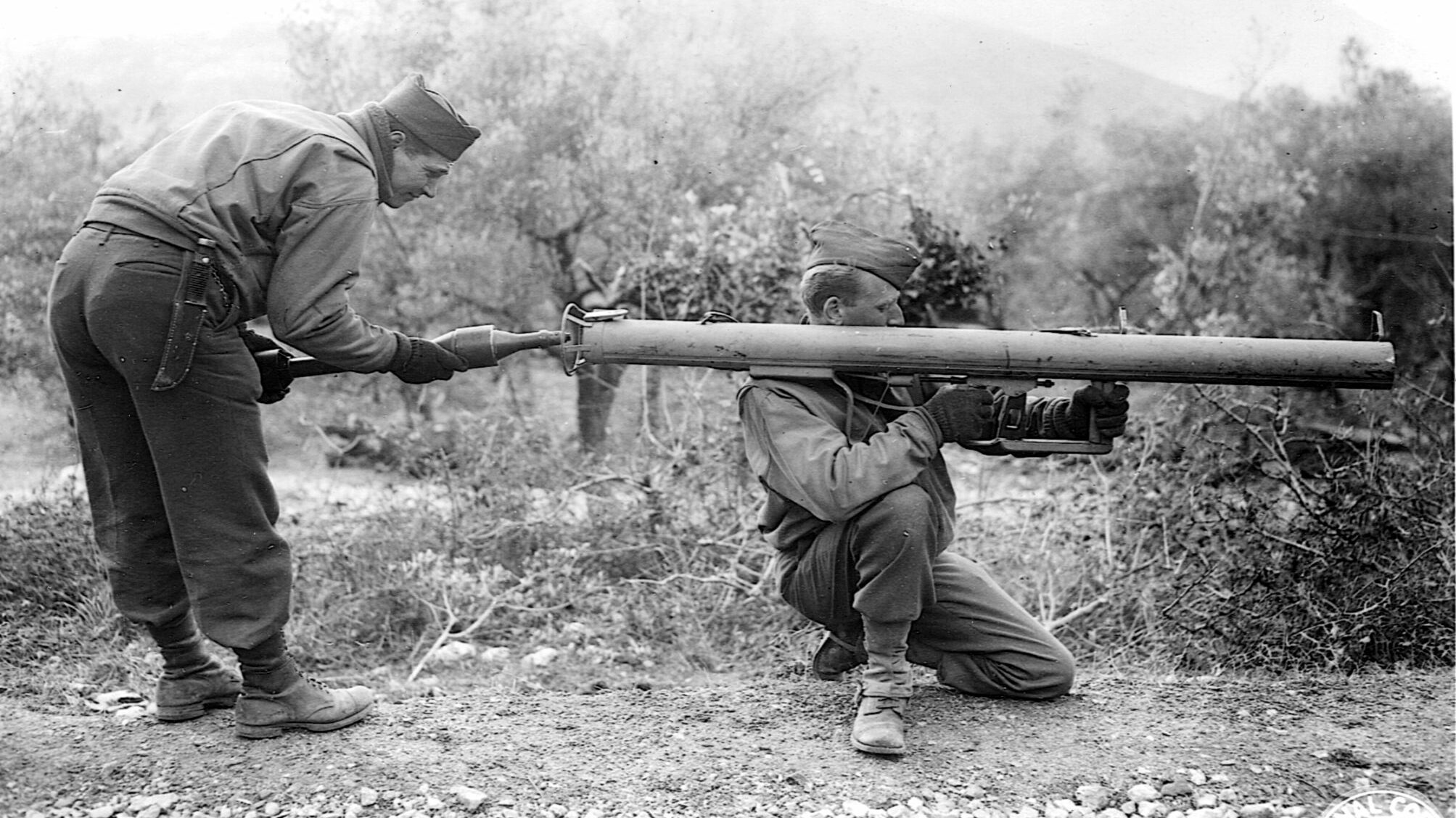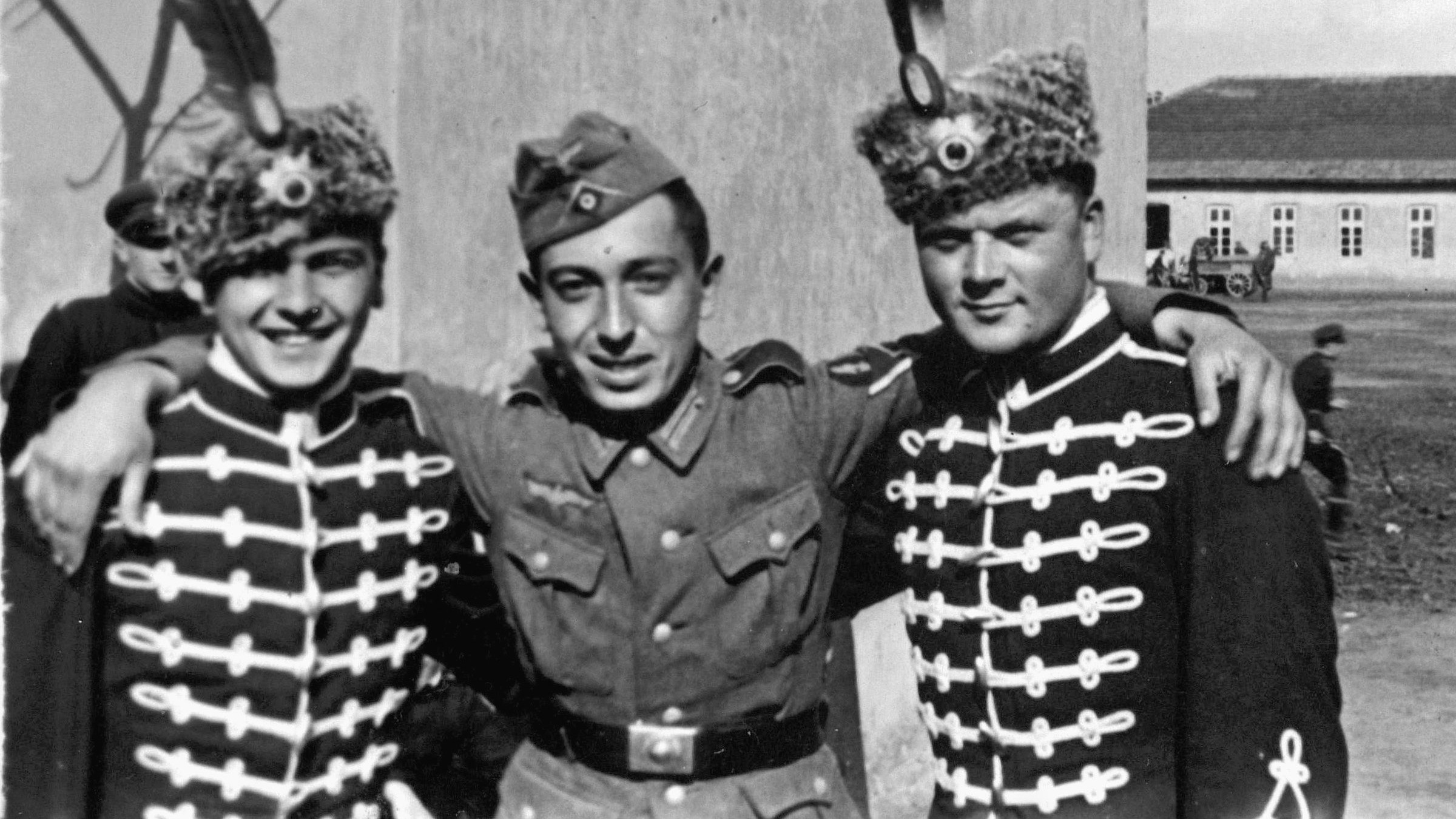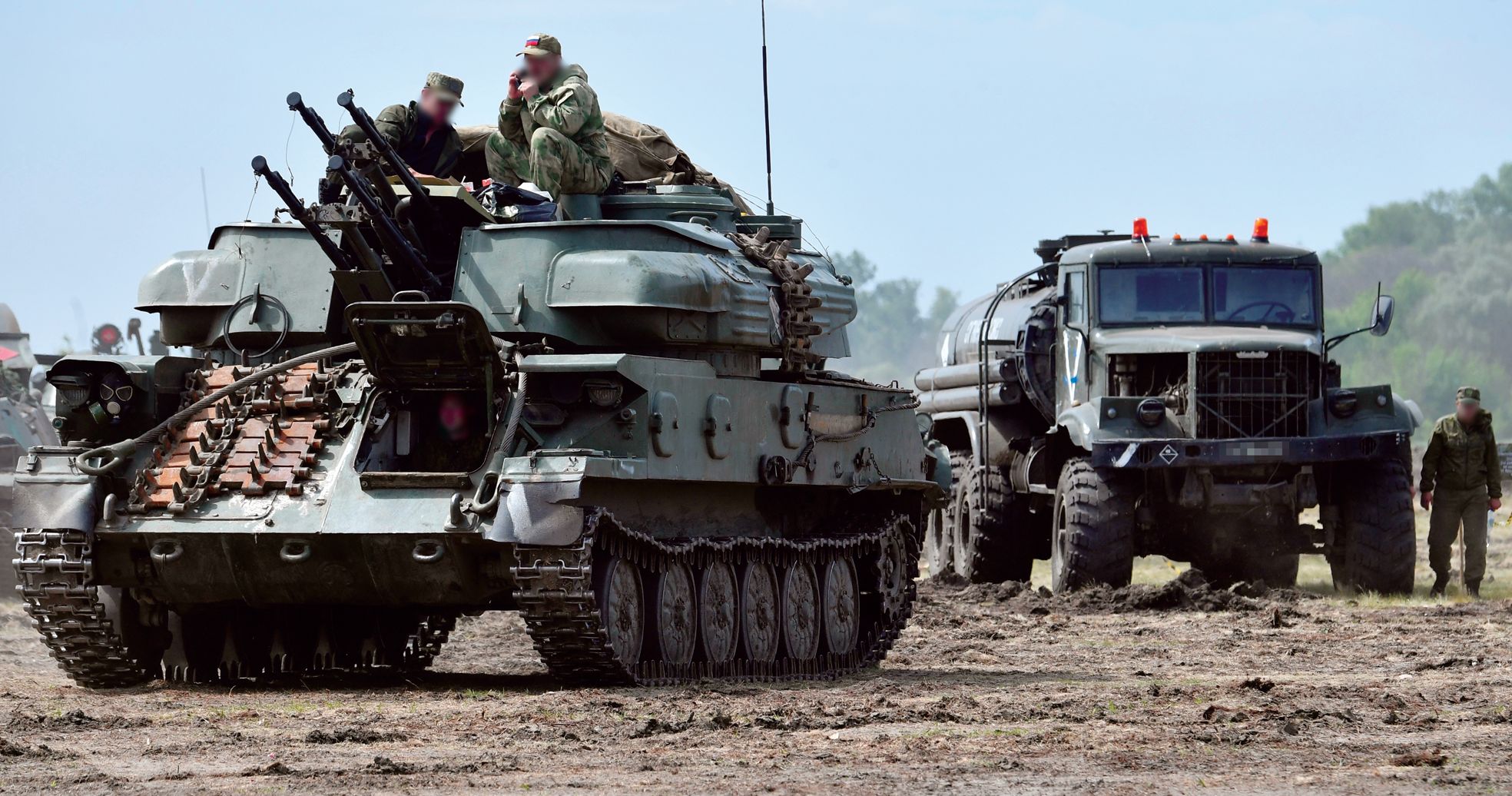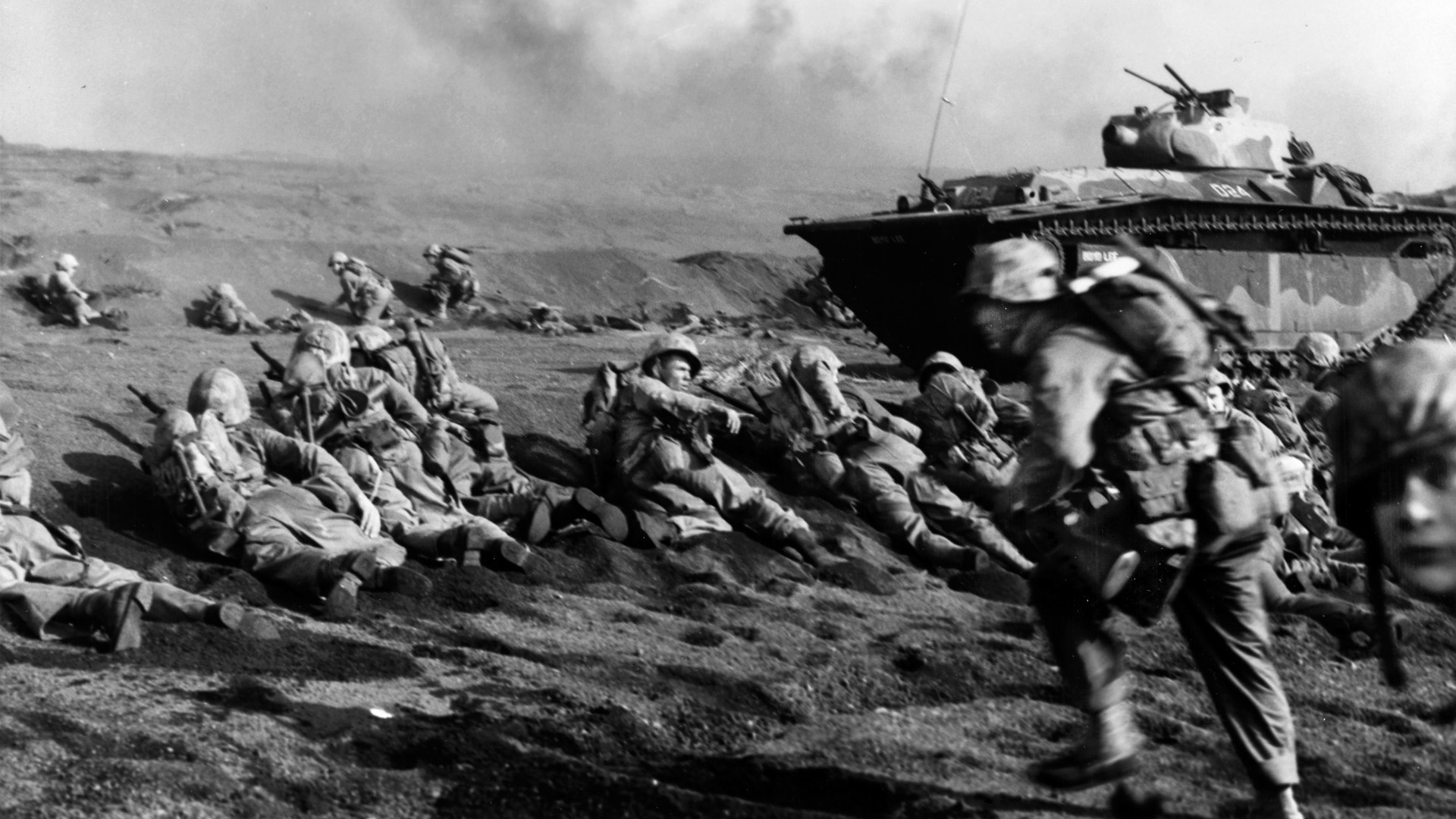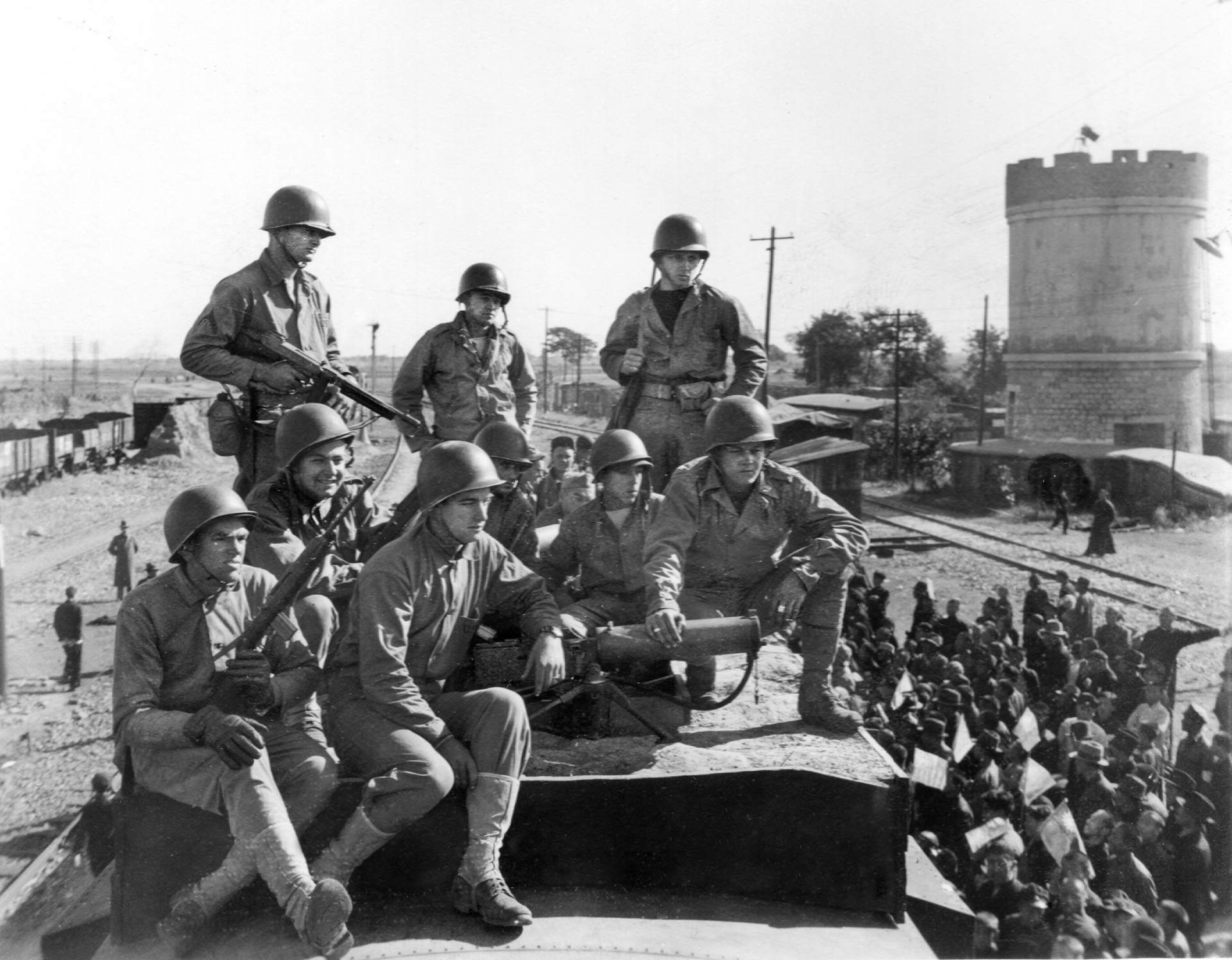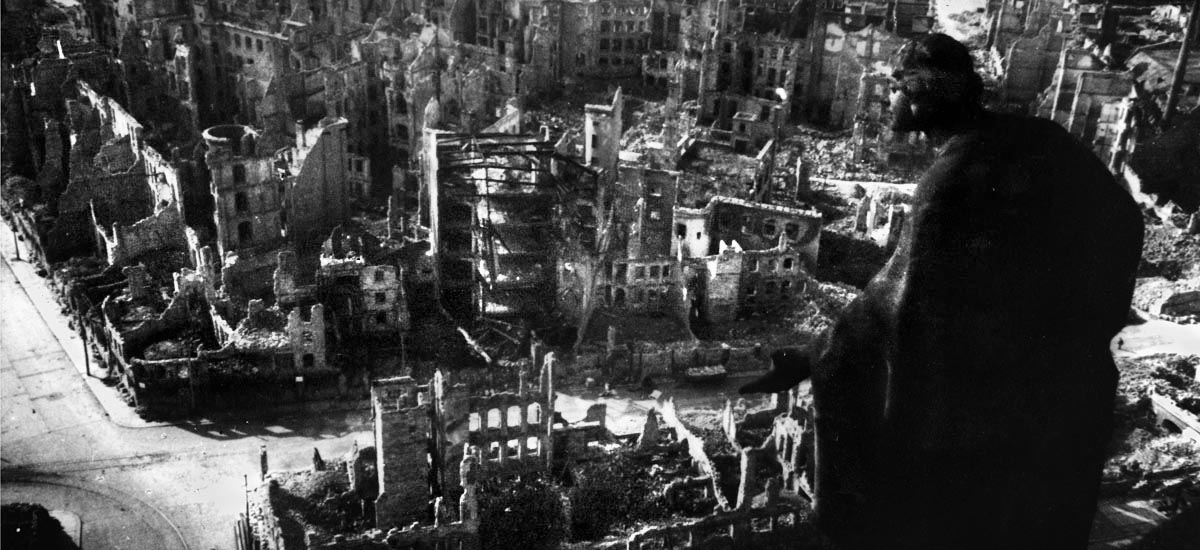By Michael D. Hull
By April 1941, just over a year and a half into World War II, Nazi Germany was master of Europe. All that stood in its way was Great Britain and her far-flung empire. The tiny island nation stood defiant but was perilously vulnerable after a series of defeats in northern France, Norway, the Far East, Greece, and Crete. With time and effort, Britain could summon imperial reserves, but she had no means of meeting the powerful German Army in battle.
Adolf Hitler had always admired the British Empire and still believed that he could bring it to the peace table. He dreamed of conquering Europe while the British Empire controlled the rest of the world.
Hitler suspected that Britain was fighting on because she looked to the Soviet Union for eventual support. So, the German leader calculated that he could isolate Britain with a rapid war of movement in the East, toppling Marshal Josef Stalin’s regime and crushing Russian bolshevism, which he loathed. An invasion of western Russia would also provide Germany with needed lebensraum, or living space. This had been one of Hitler’s aims from his earliest writings.
Less than a month after a humiliated France had surrendered to Germany in the early summer of 1940, and while he was considering an invasion of England, Hitler had ordered the drawing up of plans for an invasion of Russia in the spring of 1941.
This, he said, would be the blitzkrieg to end all blitzkriegs. With Russia struck down, Britain virtually impotent, and isolationist America unwilling to enter the war, he promised that a “Thousand-Year Reich” was assured. On December 18, 1940, Directive No. 21 was issued, authorizing Operation Barbarossa.
Hitler told General Franz Halder, chief of the General Staff, “When Barbarossa commences, the world will hold its breath and make no comment.” And the Fuhrer made clear that it would be a brutal undertaking, with no quarter given. In March 1941, he told his generals, “The war against Russia will be such that it cannot be conducted in a knightly fashion. This struggle is one of ideologies and racial differences, and it will have to be conducted with unprecedented, unmerciful, and unrelenting harshness.”
Three months later, on the eve of the invasion, Hitler told the German High Command, “Your armies will shatter the Russian colossus. It will be a hard fight; the Asiatics are cruel and cunning, but you will meet them with a determination as hard and cold as ice. Only one people will come out of this alive—our people. You must make your troops put aside all their notions of restraint and humanity…. This will be the last campaign of this war, and it will ensure the security of the Reich for many generations…. We cannot refuse to give battle, and one day the world will thank us for having responded to the call of destiny.”
Operation Barbarossa was eventually launched early on Sunday, June 22, 1941. At 3:00 am, more than 7,000 German field guns started bombarding pinpointed targets, while overhead droned 1,000 Luftwaffe bombers on their way to pound Soviet airfields, military installations, and communications centers. A key objective was the destruction of the Red Air Force. Then, German armor and infantry surged eastward across the frontier on a 500-mile front. The onslaught would eventually cover a 2,000-mile front from the North Cape to the Black Sea.
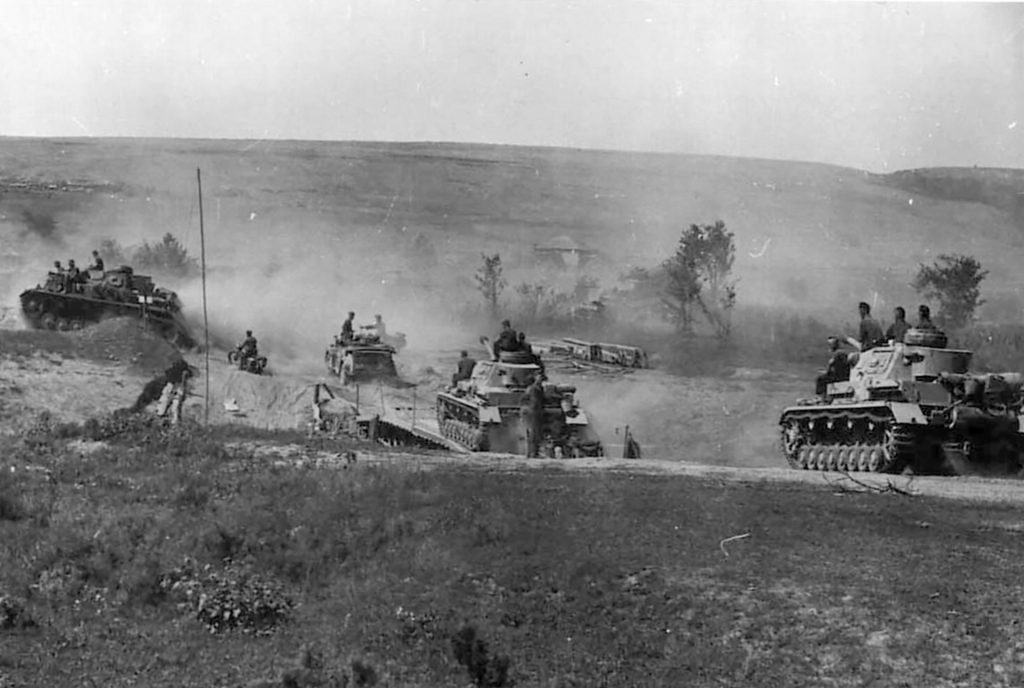
The massive invasion comprised three powerful army groups with almost three and one-half million men, 153 divisions, 3,600 tanks, 7,000 artillery pieces, 600,000 motorized vehicles, and 625,000 transport horses. Flying in support were 2,700 bombers, fighters, and dive bombers. Tuned in closely to the opening of the operation, Hitler was gleeful and supremely confident. “Before three months have passed,” he promised on that fateful day, “we shall witness a collapse in Russia the like of which has never been seen in history.”
Under the overall command of Field Marshal Walter von Brauchitsch, the three German army corps aimed for precise objectives in Russia. General Ritter von Leeb’s Army Group North was to advance from East Prussia through the Baltic States and on to Leningrad. General Fedor von Bock’s Army Group Center was to besiege the border fortress at Brest-Litovsk, swing north of the Pripet Marshes, and head for Minsk, Smolensk, and ultimately Moscow. Field Marshal Gerd von Rundstedt’s Army Group South would advance from a starting line that arced from southern Poland, along the Hungarian frontier, and across Romania. Ahead of it lay the vast plains of southern Russia and the Ukraine.
The Moscow high command was surprised by the scale of the Nazi assault, and, despite repeated warnings of Hitler’s intentions by agents and British Prime Minister Winston Churchill, Soviet dictator Stalin was unable to grasp what was now happening. He had assumed that the rumors of war were just German saber-rattling.
The Soviet Union had been preparing for war, expanding the Red Army and producing such innovative weapons as the deadly Katyusha rocket launcher and the 26-ton T-34 medium tank, arguably the best tank of World War II.
But Stalin had been prepared to make big concessions to Germany in 1941, expecting a new reconciliation of interests with Hitler, and he was not yet ready for war. When the enemy juggernaut burst across his borders, the wily, brutal Marshal Stalin refused to sanction retaliation. He was in a state of shock—almost complete mental collapse—for several days before pulling himself together. “Everything which Lenin created we have lost forever!” he groaned to aides. After recovering, he operated cautiously in the first month of the war.
The specified aim of the German armies was to kill Russians rather than conquer cities. Hitler and his general had agreed that the Soviet forces had to be trapped and beaten in western Russia, within 250 miles of the border. Their concern was that the Red Army might fall back deep into the Russian interior, drawing the Germans into a battle of attrition on the edge of Asia.
Meanwhile, as the Luftwaffe achieved aerial supremacy within the first few days, great German formations of panzers, artillery, and infantry steamrolled relentlessly into western Russia in blitzkrieg fashion. The iron spearheads knifed through lightly defended frontier positions, and there seemed to be no stopping them. Bridges across the Bug and other rivers and streams were seized by surprise, and sleepy Russian guards were machine-gunned as they scrambled for their weapons. Where there were no bridges, German shock troops paddled silently in rubber dinghies or rode powered assault boats before the Russians could open fire.
But the Soviets fought back with a desperate valor, and they held a trump card on which the Germans had not reckoned: As the massed panzers rumbled toward distant Daugava, their left flank was suddenly menaced by monstrous 43-ton KV-1 and 52-ton KV-2 tanks of the crack 3rd Soviet Armored Corps. A furious two-day battle ensured, and the Germans were able to prevail only after calling on support from high-velocity 88 mm flak guns.
All went well, though the great distances involved and the minimal Russian infrastructure soon hampered the German timetable because the panzer divisions had to halt and wait for the slow-moving infantry and vital supplies. In many areas, the Germans faced no opposition; in others, Soviet units large and small fought desperately until overwhelmed. The city of Smolensk, on the left bank of the upper Dnieper River, held out for 63 days.
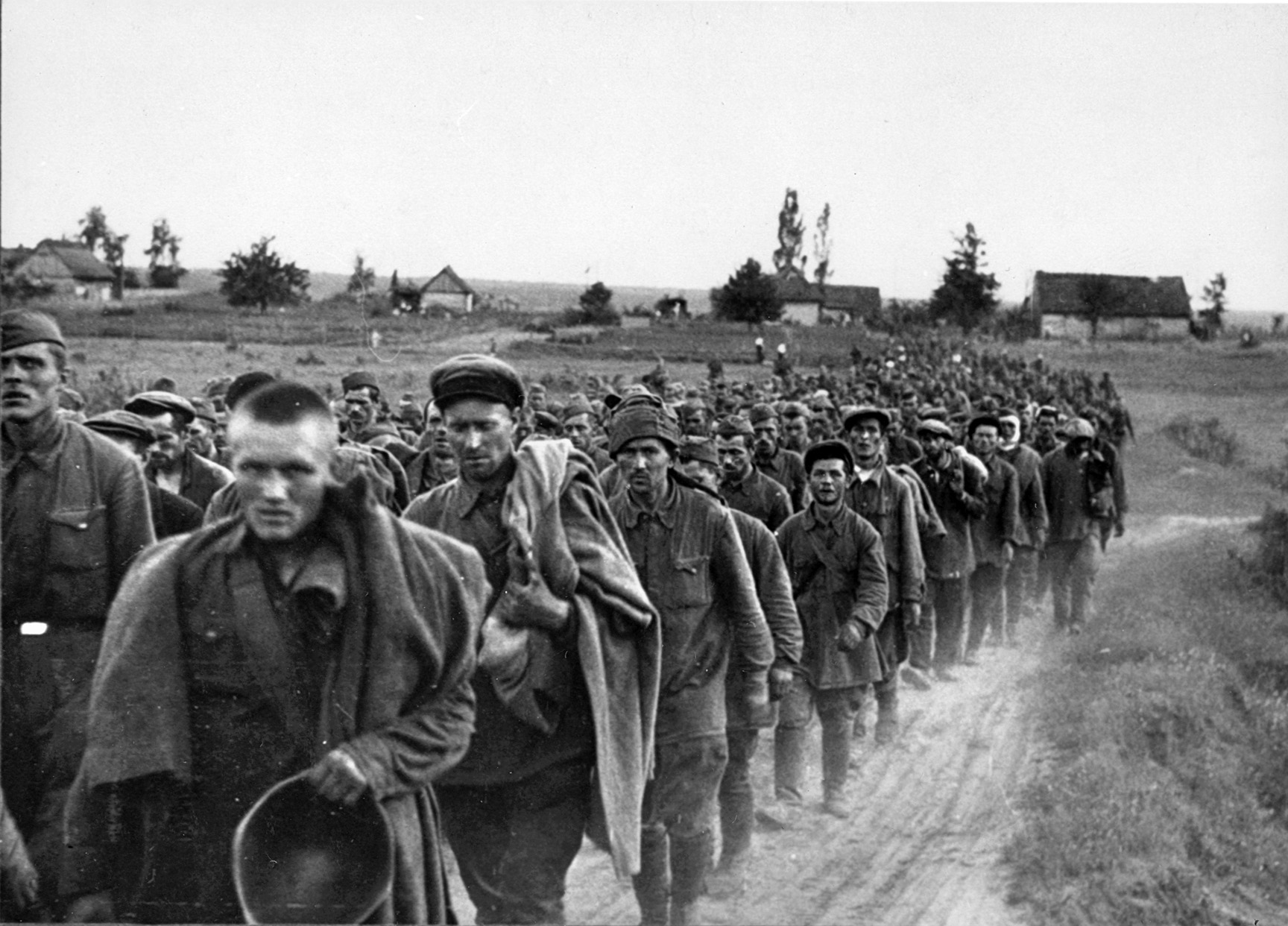
In August, Hitler and his stunted propaganda minister, Josef Goebbels, admitted that they had “obviously underestimated completely Soviet striking power and, above all, the equipment of the Soviet Union.” They were forced to realize that Stalin’s increasingly efficient regime had succeeded in creating an untouchable eastern industrial base, which enabled his armies to make good their heavy materiel losses in the battles of encirclement.
The German Army were also experiencing supply problems because it had failed to procure sufficient materiel and transport for lengthy operations. The Russians—soldiers and guerrillas alike—were upsetting the German timetable.
The Red Army had not cracked up after its initial setbacks and was contradicting Hitler’s prediction about the “whole rotten structure” collapsing. He was unaware of the Russians’ endurance and indifference to pain and death. When French writer Jean Bruller Vercours had suggested that Hitler’s legions would go through the country “like a knife into butter,” his Russian friend, Leon Motchane, retorted, “What an idea! You don’t know the Russians. Never mind if they like or dislike Stalin and his regime; that doesn’t count anymore. Holy Russia is attacked, and they’ll defend it. To the last man. And they’re invincible…. Hitler has repeated Napoleon’s mistake. Even if he gets away with some early successes, he has flung himself into a bottomless pit. He’s doomed. Let’s drink to victory!”
Stalin, alarmed at the loss of several of his armies, appointed himself commissar of defense and taken direct control of operations. The generalissimo was as brutal with the army as he had been with his own people during the infamous purges of the 1930s.
Many of the generals who had faced the initial German blitzkrieg were relieved of duty and executed. Those who remained were hard and ruthless, obeying orders no matter what the cost in casualties.
When he became aware of the Soviet Army’s growing strength, effectiveness, and will, the formerly confident General Halder was obliged to change his views. “Overall,” he said on August 11, “it is clearer and clearer that we have underestimated the Russian colossus, which had prepared itself for war with an absolute lack of restraint which is characteristic of the totalitarian state. This is as true in the area of organization as it is of the economy, the area of transport and communications, but above all to pure military power. At the start of the war, we reckoned on some 200 enemy divisions. Now we have already counted 360. These divisions are definitely not armed and equipped in our sense, and tactically they are in many ways badly led. But they are there.”
Hitler and his top advisors had naively expected their armies to be welcomed as liberators by the Russians, repressed as they were under Stalin’s chilling regime. But the Germans came as conquerors and made little or no attempt to win the hearts and minds of the people. They regarded the Slavic population as Untermenschen, or subhuman, and were determined to enslave the Slavic population and exterminate all of its Jews.
But the German units were over-reaching their supply lines while a series of sharp Soviet counterattacks stalled their advance. It became obvious to Hitler’s generals that the campaign could not be maintained on three fronts. So, resources were diverted from Army Group Center’s drive toward Moscow in order to press attacks on Leningrad in the far north and Kiev and the Ukraine to the south, thus allowing Army Group South to approach the Soviet capital from behind.
Despite increasing Russian pressure, the Germans pushed on and managed to rush forward sufficient materiel to renew their drives. As a result, they were able to encircle Kiev in late September and Bryansk-Viazma in October. Almost eight Soviet armies totaling 1.2 million men were captured. The envelopment of Kiev was probably the greatest German feat of arms in any war.
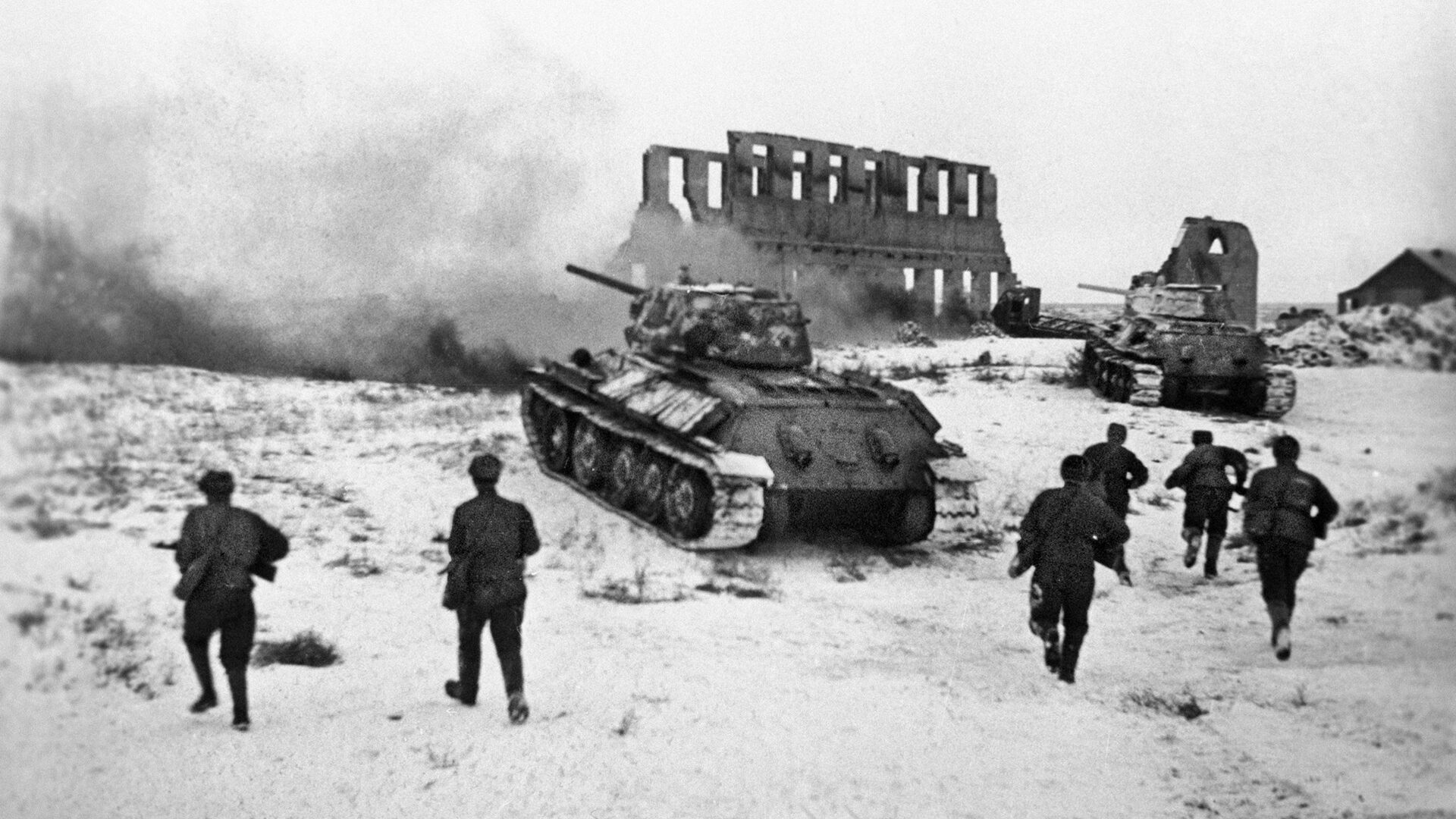
Moscow seemed to lie open to a German advance, but the weather intervened to hobble further German progress. This was what the Russians called rasputitsa, or “the time when roads dissolve.” Heavy rains in October turned dusty roads into impassable rivers of mud, bogging down tanks and supply columns. Already strained, the German logistical situation was now critical, while the weather favored the Soviets.
The Germans, though, had made great progress against the stubborn Soviet troops. Despite many unexpected setbacks and heavy losses in men and materiel, the Wehrmacht had encircled and captured an estimated total of two million Russian troops.
Nevertheless, none of the basic aims that Hitler had laid down for Barbarossa had been achieved. Although his armies had scored huge successes on the northern and southern fronts, they had not captured Moscow, Leningrad, the rich Caucasian oilfields, or the Archangel railway. Most importantly, the Russian armies as a whole had not been destroyed or prevented from withdrawing when necessary. The variety of these objectives and the sheer width of the front were proving beyond the capabilities of Operation Barbarossa.
The Red Army scored its first major successes in November. It secured the road over Lake Ladoga, the vital supply line to besieged Leningrad, and recaptured Rostov in the south. Meanwhile, the afflictions besetting the German armies became known to Stalin and his generals, who sensed that their foes were stretched to the breaking point with serious supply problems and a lack of winter equipment. The German offensive came to a standstill by the end of November, and General Eduard Wagner, the Wehrmacht quartermaster general, reported, “We are at the end of our personnel and materiel strength.”
German commanders at the front demanded several times that their exhausted troops be withdrawn, but an angry Hitler refused. The fanatical Nazi leader ordered that soldiers should die where they stood and that not an inch of ground was to be surrendered. But, on December 8, he agreed reluctantly to issue Directive No. 39, suspending Operation Typhoon for the duration of the winter. Army Group Center began pulling back to less-exposed positions farther west, and Hitler’s anger increased. Several commanders were replaced or dismissed, and on December 19, Hitler took over Field Marshal Brauchitsch’s function as army commander-in-chief. That day, the Fuhrer issued a general order: “Every man must fight where he stands. No falling back where there are no prepared positions in rear.”
But the dispirited, frostbitten troops were falling back, and Hitler was forced to realize that his Russian adventure had failed. And he now had other, wider concerns. The disaster before the gates of Moscow had been preceded by the December 7 Japanese attack on Pearl Harbor, and Hitler compounded his own troubles with a declaration of war against the United States on December 11.
When the Eastern Front stabilized at the end of the month, Germany faced three major enemies: Great Britain, the Soviet Union, and the United States. After many spectacular successes, Hitler was now involved in a total war he could not win.
The Battle of Moscow cost the Germans more than half a million men, 1,300 tanks, 2,500 artillery pieces, and more than 15,000 vehicles. By January 31, 1942, Operation Barbarossa had cost the German armies 918,000 men killed, wounded, captured, or missing.
After the Battle of Moscow, the German armies conducted a slow retreat in desperate conditions. Then, after new Russian offensives were mounted, fierce battles raged at Kalinin, Orel, the River Don, Krasnodar, Stalingrad, Kursk, Lvov, and elsewhere across the vast Eastern Front for almost three more years. Growing stronger and stronger, the Red Army relentlessly pushed the Germans back all the way to Warsaw, Budapest, East Prussia, Vienna, and finally Berlin.
In the end, Hitler’s misguided Operation Barbarossa had achieved nothing except to break the back of the German Army.
